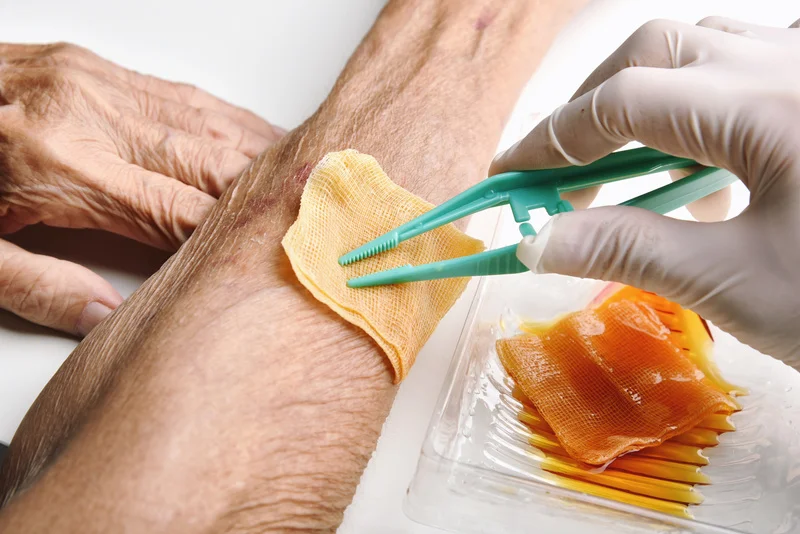Leg discoloration can be a concerning symptom that often prompts many questions. Whether you’ve noticed a change in skin color, unexplained dark spots, or persistent redness in your legs, it’s important to understand what these changes might signify and when to seek medical attention. In this article, we’ll address some of the most frequently asked questions about leg discoloration, providing you with the information you need to better understand this condition and its potential implications.
What Causes Leg Discoloration?
Leg discoloration can result from a variety of underlying conditions, ranging from minor to serious. Some of the most common causes include:
- Diabetes: Diabetes can lead to changes in skin color in the feet and legs through several mechanisms. High blood sugar levels can cause damage to blood vessels, reducing circulation to the extremities and leading to a condition known as diabetic dermopathy. This presents as light brown, scaly patches often referred to as “shin spots.” Furthermore, diabetes increases the risk of infections and diabetic ulcers, which can also alter skin pigmentation due to inflammation and scarring.

- Chronic Venous Insufficiency (CVI) and Varicose Veins: Chronic venous insufficiency occurs when leg vein valves malfunction, allowing blood to pool and pressure to build. This increased pressure causes capillaries to burst, leaking iron-rich blood into surrounding tissues. The result is venous stasis pigmentation, visible as dark, often brownish discoloration around the ankles and lower legs. Over time, this can also lead to stasis dermatitis, where the skin becomes itchy, red, and inflamed, signaling the progression of underlying venous insufficiency.

- Peripheral Vascular Disease (PVD): PVD involves the narrowing of peripheral arteries due to atherosclerosis, where plaque builds up and reduces blood flow, primarily affecting the arteries in the legs. Reduced blood flow can lead to symptoms such as pain while walking (claudication), but it can also cause changes in skin color. As blood flow diminishes, the skin may appear pale or bluish when sitting or lying down—a condition referred to as dependent rubor. When the legs are elevated, they may turn pale due to the decreased blood supply. Chronic PVD can lead to critical limb ischemia, marked by severe pain, skin ulcers, and even gangrene, which significantly alters skin color and texture.
- Raynaud’s Disease: Raynaud’s Disease is characterized by a temporary narrowing of arteries, often triggered by cold temperatures or stress. This narrowing reduces blood flow to affected areas, typically the fingers and toes, causing them to turn white and then blue. As circulation improves and the affected areas warm up, the skin may turn red before returning to a normal color. Raynaud’s does not usually cause permanent discoloration, but frequent episodes can lead to long-term changes in skin color due to repeated oxygen deprivation in the tissues. Managing stress and keeping warm can help minimize episodes. Medications that dilate blood vessels may also be prescribed.
- Bruising: Trauma or injury to the legs can cause bruising, leading to temporary discoloration that usually resolves as the bruise heals.

Is Leg Discoloration a Sign of a Serious Health Problem?
While leg discoloration can sometimes be harmless, it is often a sign of an underlying vascular or circulatory issue that requires medical attention. Conditions like chronic venous insufficiency and peripheral vascular disease can lead to more serious complications if left untreated, including ulcers, infections, and even the risk of amputation in severe cases.
If you notice sudden or persistent changes in the color of your legs, especially if accompanied by symptoms like pain, swelling, or sores that do not heal, it’s important to consult with a healthcare provider. Early diagnosis and treatment can help prevent complications and improve outcomes.
What Are the Symptoms That Accompany Leg Discoloration?
Leg discoloration is often accompanied by other symptoms, which can provide clues about the underlying cause. Common accompanying symptoms include:
- Swelling: Swelling in the legs or ankles is a common symptom of venous insufficiency and can contribute to changes in skin color.
- Pain or Aching: discomfort, pain, or a feeling of heaviness in the legs, especially after standing or walking, is often associated with vascular issues like PVD or CVI.
- Itching or Dryness: Skin conditions such as eczema or dermatitis can cause itching, dryness, and flaky skin, in addition to discoloration.
- Varicose Veins: Enlarged, twisted veins that are visible under the skin are often linked to venous insufficiency and may be accompanied by discoloration.
- Ulcers or Sores: Non-healing wounds or ulcers on the legs, particularly around the ankles, can indicate advanced venous disease or PVD and require immediate medical attention.
How is leg discoloration diagnosed?
To diagnose the cause of leg discoloration, your healthcare provider will typically start with a physical examination and a review of your medical history. They may also recommend additional tests, such as:
- Doppler Ultrasound: This non-invasive test uses sound waves to assess blood flow in the veins and arteries of your legs, helping to detect blockages or valve issues.
- Ankle-Brachial Index (ABI): ABI measures the blood pressure in your ankles compared to your arms, which can help diagnose peripheral vascular disease.
- Blood Tests: Blood tests can help rule out or identify conditions such as infections, clotting disorders, or other underlying health issues.
- Skin Biopsy: In some cases, a small sample of skin may be taken to examine under a microscope, particularly if a skin condition like eczema is suspected.
What Treatments Are Available for Leg Discoloration?
The treatment for leg discoloration ultimately depends on the underlying cause. One of the most common causes is Chronic Venous Insufficiency. In such a scenario, common treatment options for CVI can include:
- Compression Therapy: Wearing compression stockings can help improve blood flow in the legs, reducing swelling and discoloration caused by venous insufficiency.
- Medications: Depending on the diagnosis, certain venoactive drugs (eg Daflon), or topical treatments for skin conditions may be prescribed.
- Lifestyle Changes: Elevating the legs, engaging in regular physical activity, and maintaining a healthy diet can help improve circulation and reduce symptoms.
- Sclerotherapy: This minimally invasive procedure involves injecting a solution into the refluxing veins to close them, reducing their appearance and associated discoloration.
- Endovenous ablation for refluxing veins: Minimally invasive techniques Radiofrequency Ablation (RFA) help to close off diseased veins and divert blood back to the heart through the other healthy veins.
For more detailed information on how these treatments can be applied to your condition, consider exploring our vascular care services that are tailored to meet your specific needs.
Can Leg Discoloration Be Prevented?
Preventing leg discoloration often involves managing risk factors and maintaining good vascular health. Here are some preventive measures:
- Stay Active: Regular exercise, such as walking or swimming, can help improve circulation and reduce the risk of venous insufficiency and PVD.
- Elevate Your Legs: Elevating your legs when resting can help reduce swelling and promote blood flow.
- Wear Compression Stockings: If you’re at risk for venous insufficiency, wearing compression stockings can help prevent blood from pooling in the legs.
- Avoid Prolonged Sitting or Standing: Take breaks to move around if you’re sitting or standing for long periods, as this can help improve circulation.
- Maintain a Healthy Weight: Excess weight can put additional pressure on your veins, increasing the risk of vascular issues.
- Quit smoking: Smoking is a major risk factor for PVD and other vascular conditions, so quitting can significantly improve your vascular health.
Need Expert Vascular Care?
Book an appointment with Dr. Darryl Lim today and get a personalized treatment plan for your vascular health.

Conclusion
Leg discoloration is a symptom that should not be ignored, as it can indicate underlying vascular or circulatory issues that require medical attention. Understanding the causes, accompanying symptoms, and available treatments can help you take proactive steps to manage your condition and prevent complications.
If you’re experiencing leg discoloration or any related symptoms, it’s important to consult with a healthcare provider for a proper diagnosis and treatment plan. For more insights into managing vascular health and addressing leg discoloration, visit our comprehensive care page.
Taking care of your vascular health is key to preventing serious complications and maintaining a high quality of life.

















